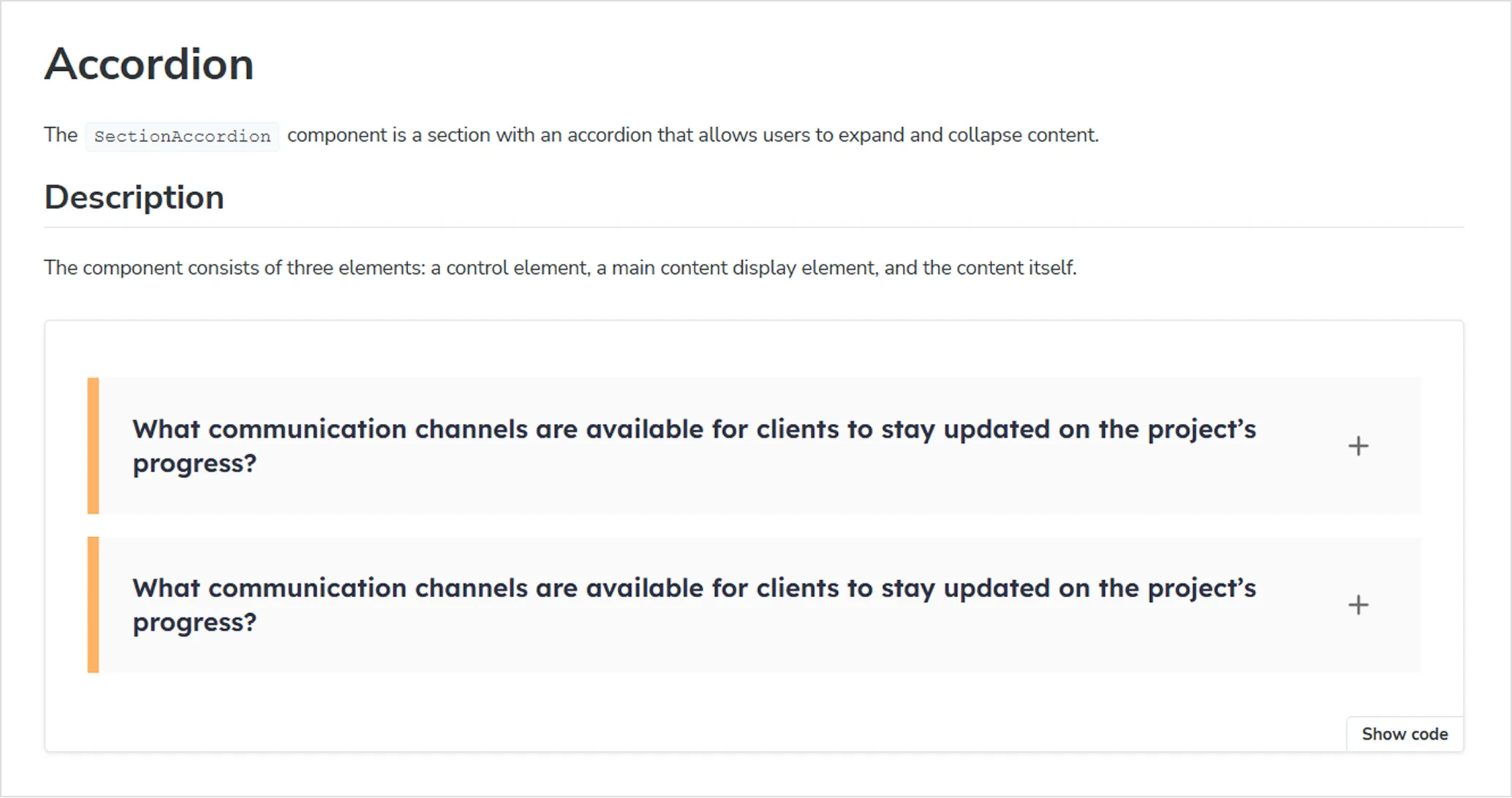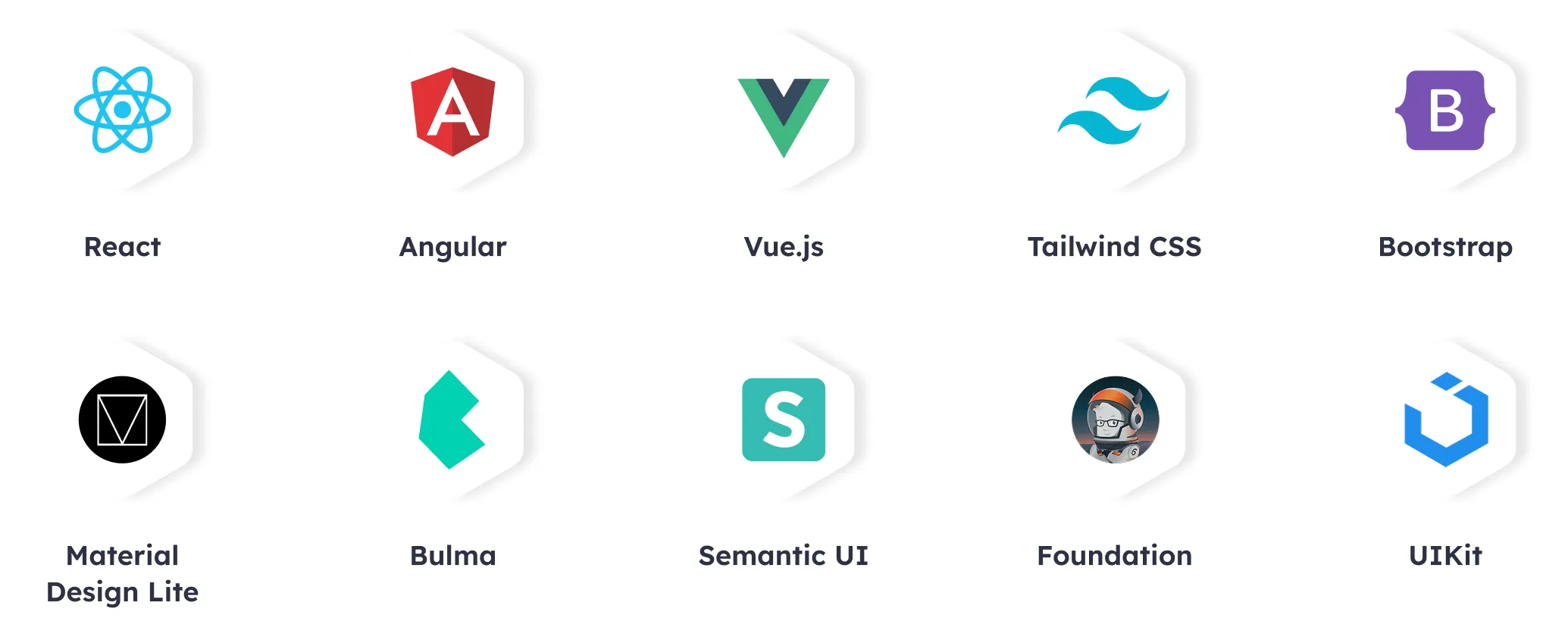
What does a front-end developer do? Roles, skills, and responsibilities

Dmitry Panin
Head of JavaScript Department
Every digital product lives or dies by its user experience. While we already covered who a front-end developer is, here we’ll go deeper into front-end developer roles and responsibilities – their core skills, responsibilities, and impact on a project’s success, explained in simple, non-technical (where possible) terms. Whether you’re a newcomer to tech or a business owner, you’ll find here exactly what you need to know about the value front-end developers bring to your project.
Core front-end developer responsibilities
After working on roughly 25 projects hands-on, I often explain that the role of a front-end developer is much broader than just “making websites look good.” Interfaces they create should be fast, reliable, and user-friendly to directly impact how people interact with your product. But how do they attain this?
Translating designs into code
Designers create mockups in Figma, Sketch, or Adobe XD. What does front-end do? Turn them into functional web pages via code. They make sure every detail matches the brand guidelines and overall visual concept. In other words, the designer specifies the “vision”, and the developer ensures that this “vision” will be accessible to all users.
Building responsive layouts
You can read this article across desktops, tablets, and phones thanks to another key skill of a front-end developer: applying responsive design and mobile-first principles to ensure the product feels natural on any device.

Mobile-first web design

Responsive web design
Optimizing performance
Speed matters. Developers use techniques like:
Lazy loading – only what is needed right now is loaded. The rest is loaded when the user reaches that point;
Caching – data is stored in the browser or server's ‘memory’ so that it loads faster when accessed again;
Code splitting – a large piece of code is broken down into parts so оnly the necessary part is loaded.
It reduces page load times and keeps interfaces smooth, even on slower connections.
Creating interactive elements
A skilled front-end developer’s work is both visually engaging, fast, responsive, and consistent. So, navigation menus, forms, animations, pop-ups, and live updates are what make a digital product feel dynamic rather than static. These elements guide the user through the interface, provide instant feedback, and create a sense of flow.
Ensuring cross-browser compatibility
Sadly, not all browsers behave the same. A front-end developer tests interfaces in Chrome, Safari, Firefox, and Edge, fixing issues so users get a consistent experience everywhere. Really, everywhere.
Maintaining accessibility
Making interfaces accessible for people with disabilities means applying specific practices and front-end dev skills:
Screen reader support: adding alt text for images and proper labels for buttons and forms. | Keyboard navigation: allowing full use of the site without a mouse. |
ARIA (Accessible Rich Internet Applications) attributes: helping assistive technologies describe what’s happening on screen. | Accessible media: providing captions or transcripts for video content. |
Here’s a simple, practical HTML example of accessibility in action:

HTML accessibility markup
Label for the field (“Email address”): A screen reader will read this out loud, so a blind user knows the field is asking for their email.
Marking the field as required: The form clearly tells assistive technologies that this field must be filled in. This prevents confusion and wasted time.
Clear button text: Instead of something vague like “Click here,” the button says “Subscribe.” Users immediately understand what will happen when they press it.
With these skills of front-end developers, someone using a screen reader or only a keyboard can easily interact with the form.
Example of accessible and inaccessible form
Documenting code and components
Well-documented code makes life easier not only for the developer who wrote it, but also for teammates and anyone who will work on the project in the future. The role of a front-end developer is to leave clear comments, write guidelines, and maintain component documentation so others can quickly understand the logic and structure of the codebase.

Example of documentation: StoryBook
Integrating with backend systems
Visuals don't live in isolation. We need data. What is front-end work? To connect the interface to backend systems through APIs (application programming interfaces), so that when a user searches for a product, submits a form, or checks their profile, the data travels to the server, gets processed, and comes back to the screen instantly.
Supporting deployment and maintenance
Finally, they help release new versions and monitor stability after updates. This is the responsibility beyond “just writing code”.
Have questions about front-end developer?
Experienced professionals will be happy to respond to them. Connect with us for an in-depth, free consultation where we'll answer all your questions and explain how front-end development can improve your business.
Dmitry Panin
Head of JavaScript Department



Technical skills for front-end developer
Well, what skills are required for front-end developers to create the kind of experiences I’ve just described?
HTML & CSS
HTML (Hypertext Markup Language) gives a page its structure – headings, paragraphs, images, and links using tags or elements. This is the semantic structure of a webpage. | CSS (Cascading Style Sheets) makes that structure look good – colors, layouts, spacing, and fonts. It describes the presentation of a document written in HTML. |
JavaScript
An obvious skill for front-end developer – knowing JS. If HTML and CSS are the body of a website, JavaScript is the brain. 99% of websites on the WWW use JS on the client side. It makes pages interactive (do you remember buttons and pop-ups).
With JavaScript, developers can:
Dynamically change content, styles, and structure of a page (via the DOM – the website’s internal “map”);
Listen for user actions (like clicks or typing) and respond instantly;
Fetch data from servers without blocking the page (using async tools such as promises or async/await);
Build interactive elements such as modals, sliders, or charts;
Validate user input in real time (e.g., showing errors in a form before it’s submitted);
Manage what’s shown on screen with stored data or state systems in frameworks.
Front-end frameworks
Modern development is faster, more consistent, and more reliable thanks to frameworks like React, Angular, or Vue.js (these three are the most demanded).

Framework is a structured foundation, so-called skill set for a front-end developer, that gives pre-built tools, patterns, and components. Instead of reinventing the wheel every time, teams can:
Reuse components instead of coding everything from scratch;
Manage data and user flows more efficiently, even in complex apps;
Ensure consistency across the project so that every part of the interface looks and behaves the same;
Build scalable applications that grow with the business without becoming fragile or chaotic;
Speed up delivery by following best practices already built into the framework.
Strong developers understand the principles behind all three because limiting your expertise to a single framework can narrow opportunities and make projects less adaptable.
Testing and debugging
Quality matters. And a very important role of a front-end developer is to write unit and integration tests (yes, we do it), use browser dev tools to find bugs, and test across devices to ensure reliability.
Version control (Git & GitHub)
Tools like GitHub help developers track changes, test ideas safely, and collaborate without risking the stability of the main product. Version control keeps a record of every update, allows teams to roll back if something goes wrong, and makes it possible for multiple developers to work in parallel without conflicts. Indeed, teamwork is an indispensable front-end skill.
Front-end developer soft skills for project work

Front-end developer soft skills
Okay, the previous point was at the intersection of hard and soft skills. But now let’s focus purely on soft skills – cause while technical expertise can always be improved, good communication is truly priceless.
Communication with stakeholders
A front-end developer interacts with designers, back–end engineers, QA testers, product managers, and clients. The ability to clearly explain progress, outline limitations, and highlight dependencies saves hours of work across the team.
Problem-solving
Bugs, browser compatibility issues, and unexpected user behaviors are part of the job. Senior front-end developer skills include not only the ability to fix problems but also to suggest practical, sustainable solutions that move the project forward.
Collaboration in Agile/Scrum teams
Modern development rarely happens in isolation. Most teams use Agile (iterative development in short cycles) and Scrum (a framework with sprints, planning, and daily stand-ups). This means delivering features step by step, adapting quickly to new requirements, and working closely with teammates to hit sprint goals.
Adaptability
When we talk about the skills needed for a front-end developer, flexibility is always at the top of the list. Requirements can change overnight, and while we can’t control that, we can control how we respond. A strong front-end developer adapts quickly, learns new tools, and keeps the team moving.
Attention to detail
Small things like a misplaced button (so many buttons, I know), inconsistent font, or a broken interaction can ruin the entire user experience. Developers with an eye for detail help maintain quality and protect the brand’s reputation.
Does the product live or die by front-end developer skill set?
Every click, every scroll, every second your product takes to load – that’s where the battle for your customer is won or lost. And it’s the front-end developer who sets the stage.
If the interface is clumsy – users leave.
If it’s slow – conversions drop.
If it feels unpolished – the brand suffers.
If it can’t scale – business growth stalls.
But when the front end is done right, the effect is immediate: people stay longer, buy more, trust deeper, and come back again.
That’s why front-end developer skills define how the product lives in the hands of customers, and whether a business merely survives… or takes off.

Get a weekly dose of first-hand tech insights delivered directly to your inbox